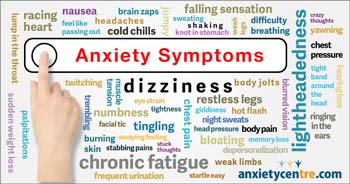Anxiety and Depression
2. Anxiety & 2e
Definition - Anxiety is defined as a feeling of worry, nervousness, or unease, typically about an imminent event or something with an uncertain outcome. It is characterized by feelings of tension and worry and sometimes physical symptoms accompany these feelings.
Feeling anxious is a normal emotion for all of us. Children too go through phases or temporary bouts of anxiety as they move through the various stages of childhood. However, when anxiety becomes excessive, chronic, and frequent, when it extends beyond a phase and negatively impacts functioning such as when it curtails a child's willingness to go certain places, interact with friends, or to try or do certain things, then it may indicate an anxiety disorder.
“Everyone experiences stress and anxiety at one time or another. The difference between them is that stress is a response to a threat in a situation. Anxiety is a reaction to the stress" (www.ADAA.org).
Current research suggests that most high ability students match the general population of students in how well-adjusted they are, in other words, are no more likely to have anxiety or depression than other students (Martin, et. al., 2010). The struggles and the imbalance that 2e children experience in their daily lives, however, can cause them to become anxious. An educator experienced in teaching 2e students, Miriam Darnell, describes it this way:
Most anxiety comes from feelings of helplessness and being out of control....Our 2e student's struggle with feelings of powerlessness in so many ways - from the inability to hold a pencil right, to difficulties with reading and math, to trouble finding a misplaced toy, to feelings that the entire world has gone mad and nothing makes sense on the news (Darnell, Coping with Obsessive Anxiety in 2e Children).
There are also common comorbidities with anxiety, including other anxieties, depression, and substance abuse. Anxiety also often presents as a secondary condition to other diagnoses, such as ASD, ADHD, learning disorders, and Tourette's Disorder (Doobay, A., Foley Nicpon, M., & Schabilion, K., 2020, Resources and Strategies for Teachers of High Ability Students With Anxiety. NAGC Conference). As you can see from this list, 2e students with these disabilities/disorders also would be at risk for an anxiety disorder.
Functional Impact of Anxiety
(Credit: Doobay, et. al., 2020)
Anxiety interferes with learning, performance, and behavior
- Disrupts attention, focus, concentration
- Lowers tolerance for frustration
- Forgetfulness
- Self-doubt
- Less efficient cognitive processing
- Task avoidance
- Escape behaviors
- Acting out symptoms associated with panic

Common Signs of Anxiety in High Ability Students:
(Credit: Doobay, et. al., 2020, and Howard, J. 2020.)
- Undue worry, fear, or distress, including about performance (e.g., fear of failure despite high performance)
- Dreading and avoiding situations that might trigger fear or embarrassment including the avoidance of challenge
- Low frustration tolerance
- Irritability / Outbursts / Disruptive behavior
- Report of minor health complaints or discomfort (e.g., headache, stomach ache, increased heart rate, chest pains, sweating, dizziness)
- Problems with concentration and memory
- Problems with sleep or changes in sleep patterns and/or appetite (often a decrease)
- Abrupt change in performance (e.g., "self-sabotage")
- Social withdrawal